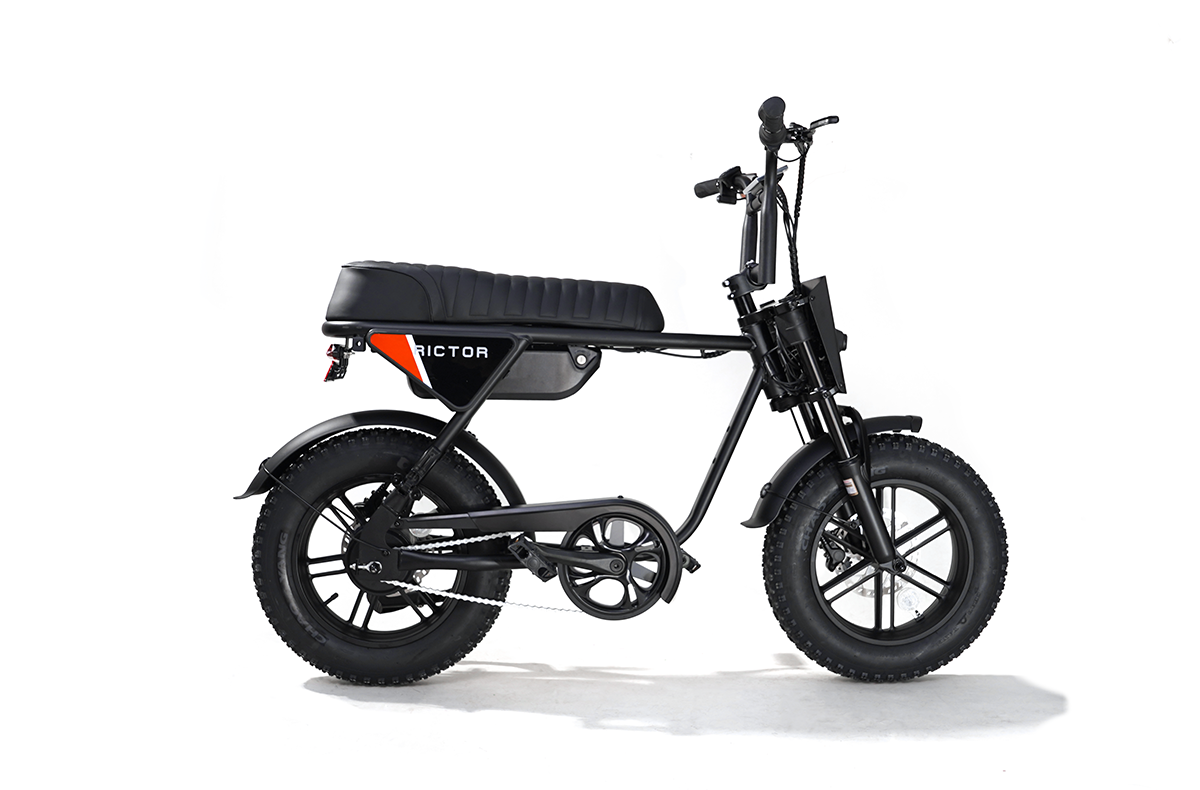
How to Choose the Right E-Bike Battery
Choosing the right battery for your electric bike can feel complicated, especially with the many technical terms, battery types, and factors you need to consider.
It’s not just about picking the most powerful one or the longest-lasting; it’s about matching the battery to your riding style, the terrain you frequent, and your bike's specific needs.
In this guide, we’ll explore the crucial aspects of e-bike batteries, helping you understand what to look for and how to make an informed decision that enhances your riding experience.
Whether you're looking for more power, longer range, or better compatibility, we’ve got you covered.
1. Battery Specifications: Voltage and Capacity
One of the most important factors in choosing an e-bike battery is understanding its voltage and capacity.
These two specifications determine the power and range of your e-bike, affecting everything from how fast you can go to how far you can travel on a single charge.
Voltage is essentially the "power" of the battery. Most e-bikes operate on 36V, 48V, or 52V systems.
But what does this mean for your ride? A higher voltage typically means more speed and better torque.
If you’re climbing steep hills or need quick acceleration, a 48V or 52V battery might be ideal.
For flat, urban commuting, 36V might be enough.
The voltage rating of the battery must match your e-bike’s motor and controller specifications.
Using a battery with too high a voltage could damage your bike’s electrical components.
Capacity, measured in amp-hours (Ah), tells you how much energy the battery can store—essentially how long it can power your e-bike before needing a recharge.
A higher capacity doesn’t just mean more riding time; it also gives you more flexibility in how you use your e-bike.
If you tend to ride long distances, a higher capacity battery (e.g., 15Ah or 20Ah) is essential.
It’s also worth noting that capacity affects your riding style.
If you frequently ride in turbo mode or tackle challenging terrain, your battery will drain faster than if you ride on eco-mode.
A larger capacity battery can offset this by providing a longer-lasting charge.
Rictor K1 takes e-bike performance to the next level with its 48V removable battery, powered by high-quality LG 21700 cells.
SEE ALSO The True Costs of Owning and Using an Electric Bike

2. Compatibility and Fit
Battery compatibility is another crucial factor, and it’s more than just ensuring the voltage matches your e-bike’s motor.
Not all batteries fit every bike, and using a battery that isn’t compatible can lead to poor performance or even damage your e-bike.
When selecting a battery, always consult the manufacturer’s recommendations. Most e-bikes are designed to work with a specific type of battery, and using the wrong one can lead to inefficiency or malfunction.
The wrong voltage could cause the motor to overheat or underperform, while an ill-fitting battery can make your bike feel unbalanced.
Manufacturers often list the range of compatible batteries, so it’s essential to stick to those guidelines.
Weight and size also play a significant role in battery performance and overall bike handling.
Batteries with higher capacity often weigh more, which can impact how your bike rides.
A heavier battery may make your e-bike feel sluggish, especially on inclines, and affect how easily you can maneuver it.
For commuting or city riding, where speed and agility are crucial, a lighter, more compact battery might be a better choice.
On the other hand, if you’re after long-distance or off-road riding, the extra weight of a larger battery can be worth it for the extended range.
It’s also important to consider how the battery fits within your bike’s frame.
Some e-bikes have built-in battery compartments, while others use external mounts.
The size and shape of the battery need to fit the frame snugly to avoid rattling or discomfort during rides.
3. Battery Type and Terrain
The type of riding you do and the terrain you cover should heavily influence your battery choice.
Different terrains place different demands on your e-bike’s battery, so it’s crucial to select a battery that can handle those challenges.
For riders who frequently tackle hilly terrain or off-road trails, a higher voltage battery, like 48V or 52V, is usually the best choice.
Why? Because riding uphill or over rough ground requires more torque from your motor, which means your battery has to supply more power.
A higher voltage battery provides the necessary power to keep your bike moving smoothly over steep inclines, reducing strain on the motor and allowing you to maintain speed even on challenging terrain.
For off-road riders, higher capacity batteries are also essential, as the unpredictable nature of trail riding—think uneven surfaces, obstacles, and frequent stops and starts—can drain a battery much faster than city riding.
On the other hand, if most of your riding is on flat, smooth roads, a lower voltage battery, like 36V, might be all you need.
Lower voltage batteries are lighter, making your bike more nimble and easier to control, which is perfect for city commuting or casual rides around town.
And since you’re not pushing your motor as hard on flat ground, you won’t need as much battery power to cover the same distance.
Another consideration is whether to go for a removable or built-in battery. Removable batteries offer convenience—especially for those who live in apartments or don’t have access to charging points near their bike storage.
You can easily detach the battery, bring it inside, and charge it wherever you have access to power.
However, built-in batteries have their advantages too.
They’re often better protected from the elements and offer a more seamless look, blending into the bike’s frame.
Built-in batteries may also enhance your bike’s aerodynamics and are less likely to be stolen.

4. Battery Brand and Quality
Not all e-bike batteries are created equal, and the brand you choose can significantly impact both performance and longevity.
Opting for a well-known, trusted brand can make a big difference, especially when it comes to factors like warranty, safety, and overall battery life.
Well-established brands typically provide better customer support and more reliable products, which can save you a lot of frustration and potential costs down the road.
When choosing a battery, it’s important to consider the materials and technology used in its construction.
Lithium-ion batteries are by far the most common type used in e-bikes today—and for good reason.
They’re lightweight, have a higher energy density than older battery types (like lead-acid batteries), and offer more charge cycles, meaning they last longer.
On the other hand, lead-acid batteries, while cheaper, are significantly heavier and provide less capacity for their size, making them a poor choice for most e-bike riders.
Lithium-ion batteries also charge faster and hold their charge longer when not in use.
While the initial cost of a lithium-ion battery may be higher than other types, the investment pays off in terms of performance, weight savings, and longevity.

5. Upgrading and Enhancing Performance
One of the great things about e-bikes is their upgradeability.
If you’ve had your e-bike for a while and feel like you could use more power or range, upgrading your battery is a viable option.
Many e-bike riders choose to upgrade their battery as their needs change, but there are several things to keep in mind when doing so.
First, you need to ensure that the new battery is compatible with your bike’s existing system.
Not all e-bike motors and controllers can handle higher voltages or capacities, and using an incompatible battery could lead to damage or reduced performance.
If your bike is designed for a 36V battery, upgrading to a 48V battery may give you more power, but it could also overload your motor or controller, leading to expensive repairs.
Do you need more range because you’ve started taking longer rides? Are you looking for better performance on hills or rough terrain?
Upgrading to a higher capacity battery can extend your range, while increasing voltage can give you more power for climbing or faster acceleration.
More power and capacity often comes increased weight and size, which can affect the handling and portability of your e-bike.
It’s also worth considering whether you’re happy with your current battery’s performance in extreme weather conditions.
Lithium-ion batteries can lose capacity in very cold or hot temperatures, so if you ride in extreme climates, you might want to look for a battery that performs well in those conditions.
Conclusion
Choosing the right e-bike battery is all about finding the perfect balance between power, range, size, and compatibility.
Whether you’re upgrading for more range or selecting a battery for a new e-bike, keeping these key factors in mind will ensure you get the most out of your ride.
FAQs
How often should you replace an e-bike battery?
An e-bike battery typically lasts 3-5 years, depending on usage and maintenance. After about 500-1,000 charge cycles, the battery's capacity will start to diminish, which means shorter riding ranges. Proper care, like avoiding extreme temperatures, can extend its lifespan.
What is the average range of an e-bike on a full charge?
The average range of an e-bike on a full charge is between 20-70 miles, depending on the battery’s capacity, the terrain, rider weight, and riding speed. Factors like using pedal assist or riding in eco mode can extend the range.
Can you leave an e-bike plugged in overnight?
Leaving an e-bike plugged in overnight occasionally won’t harm the battery, especially if it has a smart charger. However, consistently overcharging can reduce the battery's lifespan over time. It's best to unplug it once fully charged to preserve the battery.
💡 Explore More Here!
- Your handy checklist for buying a new e-bike, don't miss your best bike
- How Fast Can E-Bikes with Different Voltages Go?
- Are Electric Bikes Allowed in National Forests? (In Some, Yes)
- Quick Gearshift Tips! Easy Guide for Beginners on 7 Speed Bikes
- 2024 Electric Bicycle Pricing, don’t overpay on your next ride [+ Good Recommendation]



